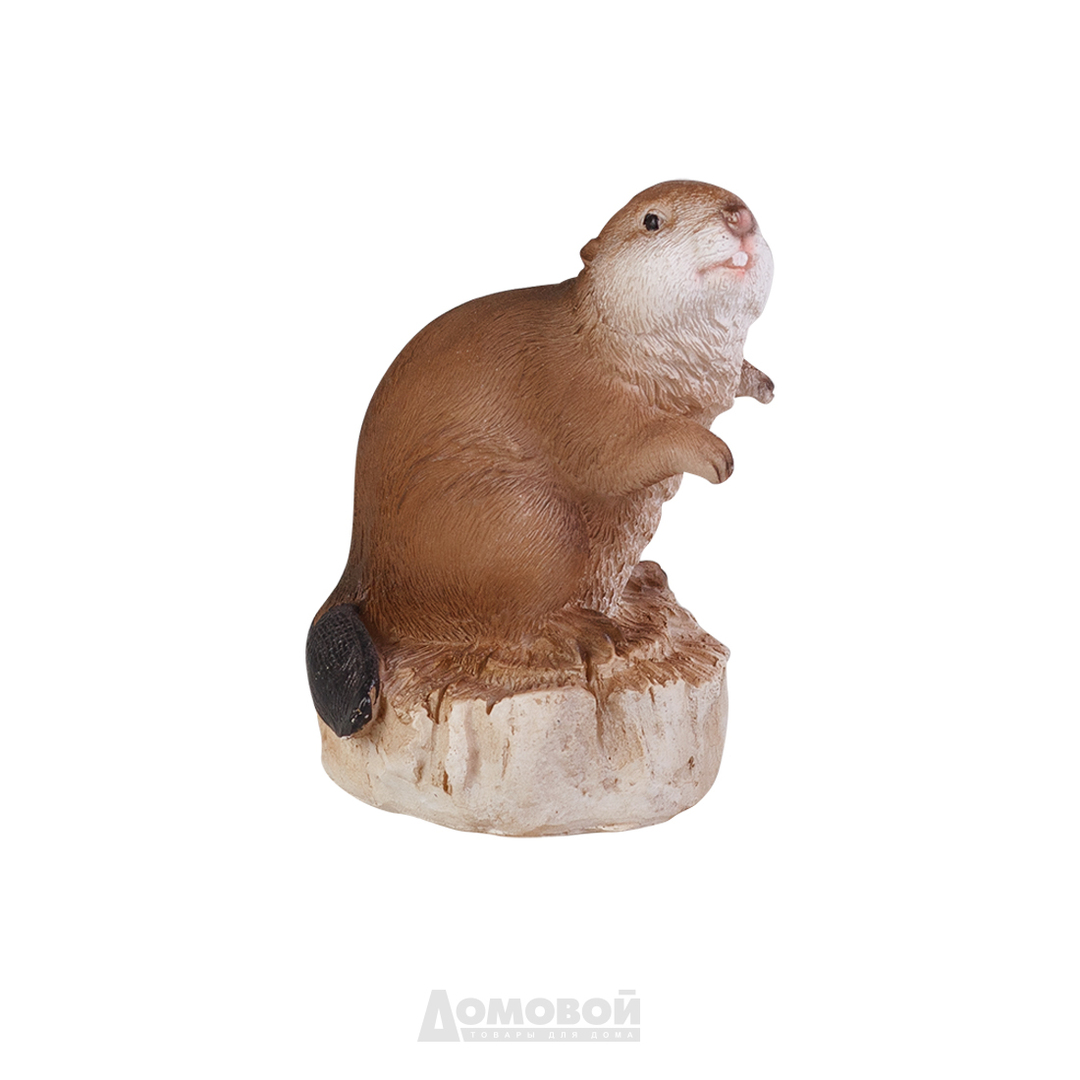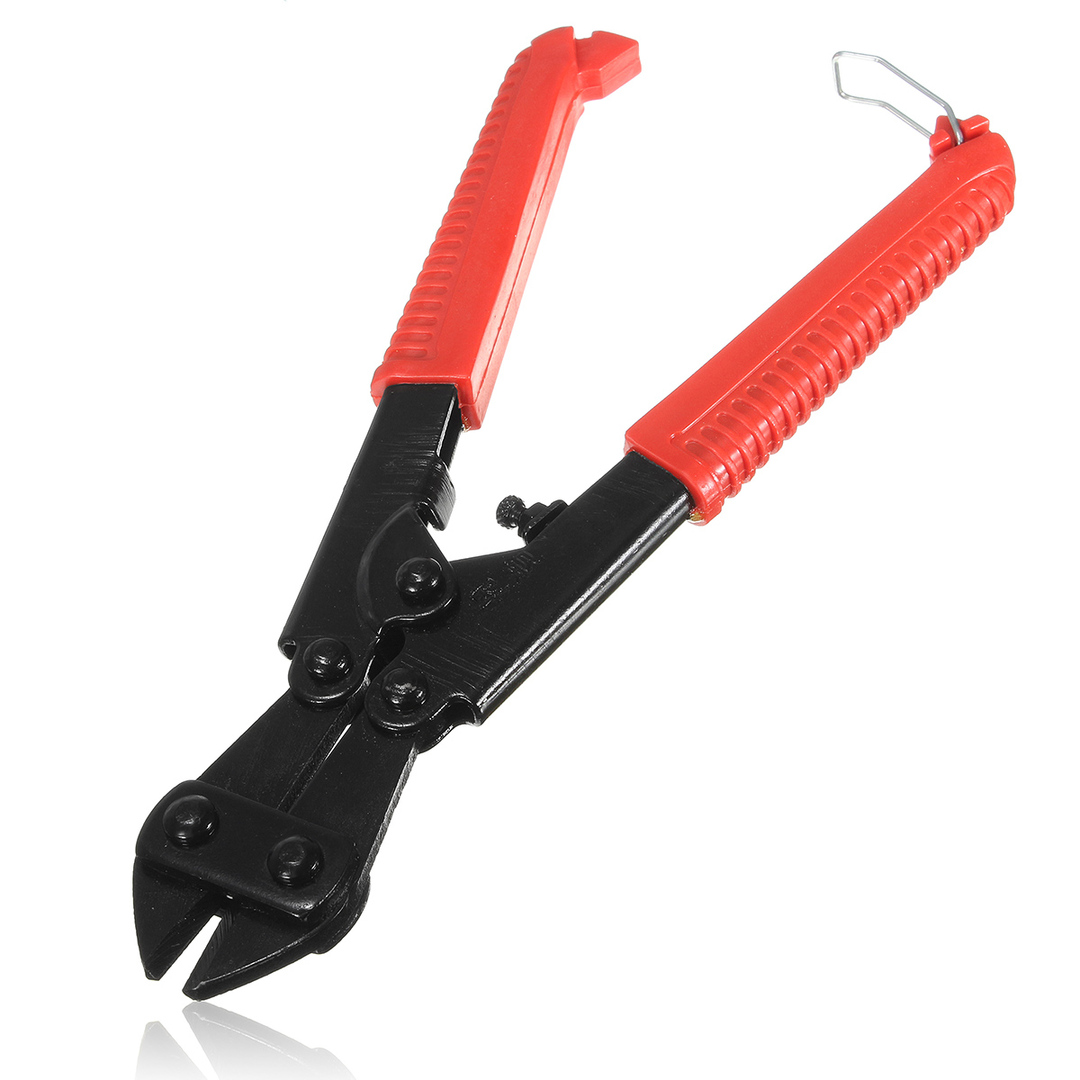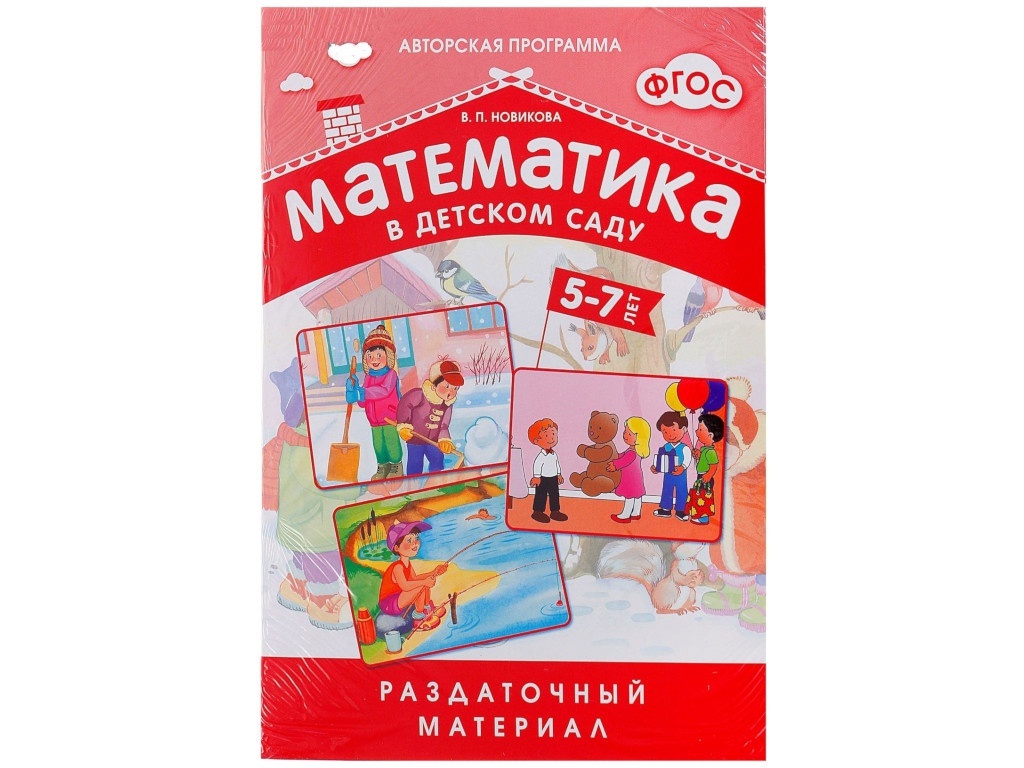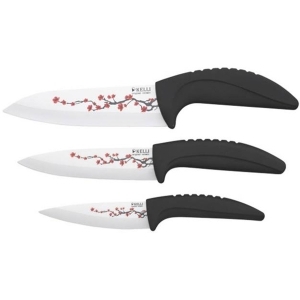
- Ceramic knife -
- production features Ceramic knife advantages:
- Drawbacks of ceramic knives:
- How to sharpen a ceramic knife?
- How to sharpen a ceramic knife at home?
- Useful recommendations:
The Japanese invention - ceramic knives, today are becoming more popular. The quality of the novelty was appreciated by the entire culinary world. Preference for the ceramic knife is given not so much by the hostess, who in the kitchen needs a sharp knife, as much as the owners who are lazy to sharpen metal knives every week. Although ceramic knives do not require frequent sharpening, but sooner or later such a problem still arises and the question arises, how to sharpen ceramic knives.
to the table of contents ↑Ceramic knife - features of
production The stylish modern look of ceramic knives attracts consumers more and more, but this is not their only advantage. Ceramics - a very strong and reliable material, which is made of high quality zirconia powder. It is formed under high pressure and sintered in modern furnaces at temperatures above 1600 C.
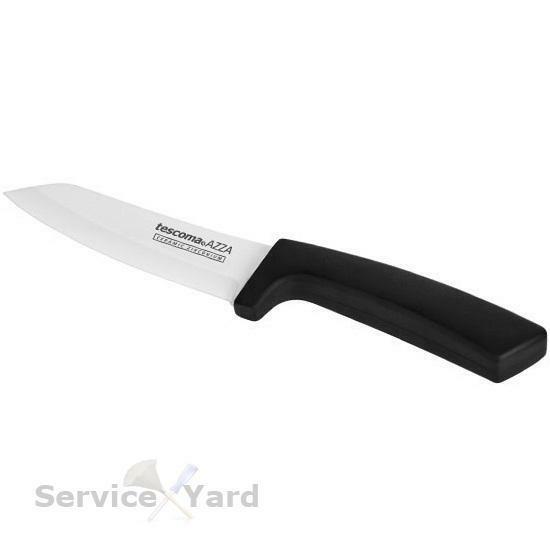 Zirconium is the second after hardness diamond, it is both its dignity and disadvantage, which is also transferred to products from it. The product of the highest quality can be obtained only by strictly observing the technology: the longer the product is in the oven, the better it will be, but the knives made in the accelerated process in the handicraft enterprises become fragile and completely unsuitable for operation. Taking into account even this feature, it becomes clear that sharpening ceramic knives must be correct and accurate.
Zirconium is the second after hardness diamond, it is both its dignity and disadvantage, which is also transferred to products from it. The product of the highest quality can be obtained only by strictly observing the technology: the longer the product is in the oven, the better it will be, but the knives made in the accelerated process in the handicraft enterprises become fragile and completely unsuitable for operation. Taking into account even this feature, it becomes clear that sharpening ceramic knives must be correct and accurate.
Important! Products made of high-tech material can be black and white. The strength of modern materials is almost the same as that of some metals. This is especially true for models made of black ceramics - they are stronger than white ceramics because they are kept in the furnace for a longer time, under the influence of higher pressure and temperature. Knives of black color are valued higher, but they are more expensive.
to content ↑Ceramic knife advantages:
- Long service life without sharpening. Zirconium hardness allows, for gentle handling, a long time not to lose the knives of their qualities. On this product, rust does not appear during operation, and they should not be sharpened more often than, for example, a steel knife.
- Sharpness of the blade. The knife does not adhere to the food when cutting, even eggs and cheese. The softest fruits and vegetables, such tools can be cut into smooth and thin slices.
- Blades made of zirconia do not oxidize. Due to this property, products can not be oxidized during cutting. They do not leave a metallic aftertaste.
- Ceramic knives are well washed. Cutting 1 product and washing the knife, you can not worry that the smell when cutting cuts into another product.
- Blades do not magnetize or darken.
- Knives from ceramics are light, almost weightless. If you decide to teach your child the skill of cooking, then such a knife is an excellent helper. It looks beautiful, colorful, light enough, and, moreover, has rounded ends of the blade.
- Qualitative ceramic knives are not afraid of hot water and household chemicals.
- Reliability and refinement.
- Convenience and comfort in use.
Disadvantages of ceramic knives:
- Cutting products is only necessary on cutting boards.
- Friability. Such products can not cut frozen meat and bones, nor can the tool be dropped, especially on metal and glass surfaces, since the product can crack.
- For sharpening it is necessary to use special sharpeners, and their application requires special skills.
- Small blade length. As a rule, the length of the blade is no more than 18 cm, so it's quite difficult to cut a watermelon with such a knife.
- After cutting the dyeing vegetables on the product, stains may remain if the instrument is left unwashed.
Important! If the ceramic knives are not sharpened correctly, the cutting edge will become brittle and crumble when working.
to the table of contents ↑How to sharpen a ceramic knife?
Tools from this material do not need to be sharpened every month, since they remain sharp for a long time, but, unfortunately, when it comes time to restore the sharpness of the blade, the question arises as to sharpen ceramic knives.
Because ceramic knives are harder than diamond, sharpeners with diamond spraying are used for sharpening.
Sharpening can be done in two ways:
- Find a special workshop where this operation will be performed professionally.
- Carry out sharpening with your own hands, using a circle or a special diamond sharpener.
If for residents of large cities the first option is preferable, then those who live in small settlements do not have a choice - one must rely only on one's own strengths.
to the contents ↑How to sharpen a ceramic knife at home?
It should immediately be noted that sharpening at home requires certain skills. For 5 minutes, the blade can not be sharpened, so count on the fact that the process of returning to him sharpness will need to be given a sufficient amount of time, plus you personally will need patience and endurance.
With diamond sharpener
 The first thing to sharpen ceramic knives at home, you need to purchase a special sharpener. Sharpeners have a diamond disk. Some models allow you to sharpen not only ceramic, but also steel blades.
The first thing to sharpen ceramic knives at home, you need to purchase a special sharpener. Sharpeners have a diamond disk. Some models allow you to sharpen not only ceramic, but also steel blades.
They can be:
- Mechanical. Manual sharpeners are more affordable, but for the grinding procedure, you will need a lot more time. Some models of manual sharpeners allow you to fix the blade at an angle.
- Electric. Such sharpeners perform the operation qualitatively, quickly and with minimal effort. When acquiring a sharpener, you will understand what kind of sharpening it is designed for. For example, the popular abrasive tools of the Japanese company Kioser have several functions:
- Straighten the chips on the blade of the knife.
- Adjust the angle of sharpening.
- Automatically determine the optimum distance between grinders.
- Automatically adjusts to the thickness of the blade, which allows you to sharpen the cutting edge evenly and qualitatively.
Using the diamond wheel
You can sharpen the blade on an ordinary grinding machine, replacing the abrasive wheel with a circle with diamond dusting. Also, two circles of electrocorundum are suitable, their spraying should be 80 μm - for rough processing, and 40 μm - for grinding the cutting edge.
Important! Sharpening the product is necessary at low engine speeds and make sure that the runout of the circle is minimal, because any excess force will damage the knife.
Start grinding from the base of the handle and slowly move to the point. Repeat this movement about three times. The cutting edge, at the same time, should be at an angle of 20-25 degrees. Repeat the same procedure on the other side of the cutting tool.
Important! The angle of the edge depends on the purpose of the knife. If the tool you are using to make food, then hold the blade at an angle of 20-25, and the one that needs to make thin cuts, sharpen with an inclination of 10-20 degrees.
After sharpening, the cutting edge should be more convex. Only in this case it is considered that the grinding process has passed correctly.
Important! Ceramic blade can be sharpened only a certain number of times.
to the contents ↑Useful advices:
- By sharpening type, cutting tools can be single-sided and double-sided. The latter version of the knives is suitable for both right-handed and left-handed people.
- It is necessary to carry out work on a diamond circle very carefully and carefully.
- Ideally, a qualitatively sharpened tool should have a small convex side surface in the cut - this form of sharpening gives the blade strength.
- When using ceramic knives adhere to the rules of their operation:
- When cutting, use only a wooden, silicone, plastic cutting board.
- Cut the products smoothly and smoothly.
- The ceramic tool can not be scraped, as the blade can be damaged.
- The cutting tool must not be washed in a dishwasher, as ceramics do not tolerate sudden temperature changes.
- Store the instrument in a special case or stand, and select a separate place from the rest of the kitchen utensils.
- Do not use the knife as a screwdriver, for opening bottles, cans - only for the purpose.
We hope that you have become acquainted with all the advantages of a ceramic knife and the way it is sharpened. If you take care of the timely and qualitative restoration of the blade, then you will be very pleased to cut the food and cook with such a cutting tool. Observe the instructions for using the cutting tool, and it will last you for many years, and the need for sharpening will only take a few years to come.

